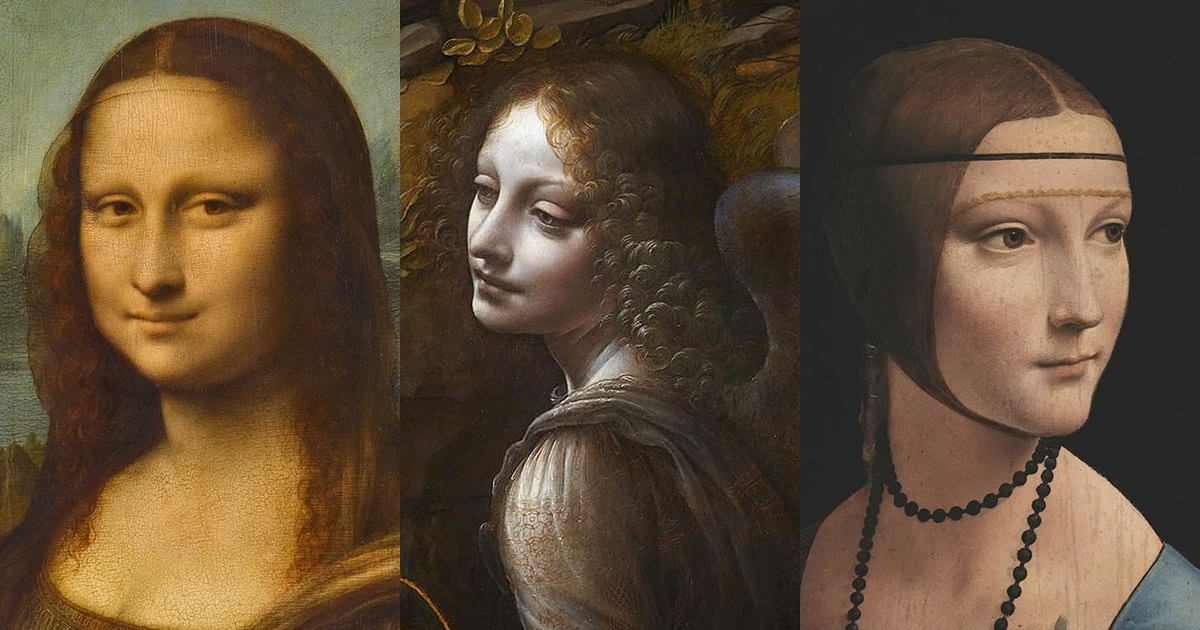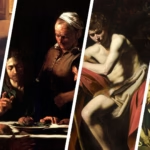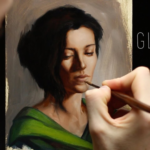Sfumato, an exquisite painting technique that emerged during the Renaissance, represents the pinnacle of artistic subtlety and sophistication. Derived from the Italian word for smoke, sfumato embodies the delicate interplay of light and shadow, creating an ethereal quality that blurs the boundaries between forms and imbues artwork with a dreamlike atmosphere. This technique, most famously associated with the masterful works of Leonardo da Vinci, revolutionized the way artists approached the rendering of light, depth, and emotion in their paintings. By softening the transitions between colors and tones, sfumato achieves a level of realism and depth that captivates the viewer, inviting them to peer deeper into the mysteries of the canvas. The resulting effect is not merely a visual treat but a profound exploration of the nuances of human perception and the complex interplay between vision and interpretation.
The Origins and Evolution of Sfumato
The birth of sfumato as a painting technique is inextricably linked to the artistic and intellectual ferment of the Renaissance period. This era, marked by a renewed interest in classical learning and a burgeoning curiosity about the natural world, provided fertile ground for the development of innovative artistic techniques.
During the 15th and 16th centuries, Europe witnessed a remarkable transformation in artistic expression. The Renaissance, with its emphasis on humanism and the revival of classical learning, fostered an environment where artists sought to push the boundaries of representation. This period saw a shift from the flat, symbolic style of medieval art to a more naturalistic approach that aimed to capture the world as it appeared to the human eye.
The quest for greater realism in art led to significant advancements in various techniques, including perspective, anatomy, and the manipulation of light and shadow. It was within this context that sfumato emerged as a revolutionary method for achieving unprecedented levels of subtlety and depth in painting.
Leonardo da Vinci: The Master of Sfumato

No discussion of sfumato would be complete without delving into the contributions of Leonardo da Vinci. Widely regarded as the quintessential Renaissance man, Leonardo’s insatiable curiosity and keen observational skills made him the perfect conduit for the development and refinement of this technique.
Leonardo’s approach to sfumato was deeply rooted in his scientific understanding of optics and the behavior of light. He observed that the human eye perceives edges and transitions not as sharp lines but as gradual shifts in tone and color. This insight led him to develop a painting method that mimicked this natural phenomenon, resulting in works of extraordinary realism and emotive power.
The artist’s notebooks are filled with observations and experiments related to light, shadow, and the perception of form. These studies formed the foundation of his sfumato technique, which he applied with unparalleled mastery in works such as “The Mona Lisa” and “The Virgin of the Rocks.”
Technical Aspects of Sfumato
At its core, sfumato involves the subtle blending of colors and tones to create soft, imperceptible transitions. This effect is achieved through the application of multiple thin layers of translucent paint, each building upon the last to create depth and luminosity.
The technique requires immense patience and skill, as the artist must carefully control the opacity and thickness of each layer. The result is a soft, atmospheric rendering in which forms emerge gradually from shadow and fade seamlessly into the background—mimicking the way the human eye perceives depth and contour without hard outlines.
One of the key aspects of sfumato is its ability to render atmospheric perspective. By softening edges and reducing contrast in distant objects, artists could create a convincing illusion of depth and space on a two-dimensional surface. This effect is particularly evident in Leonardo’s landscapes, where distant mountains and hills seem to fade into a hazy atmosphere.
The Psychological Impact of Sfumato
The allure of sfumato extends far beyond its technical brilliance, delving deep into the realms of human perception and emotional response. This technique, with its subtle interplay of light and shadow, has a profound psychological impact on viewers, engaging their minds in ways that more straightforward artistic approaches often fail to achieve.
Ambiguity and Interpretation

Ambiguity is at the heart of sfumato’s psychological power. By blurring the lines between forms and creating areas of indistinct detail, sfumato invites viewers to engage more actively with the artwork. This ambiguity stimulates the imagination, allowing each observer to interpret the image in slightly different ways based on their own experiences and perceptions.
This effect is perhaps most famously exemplified in the enigmatic smile of the Mona Lisa. The soft, blended edges of her expression create a sense of movement and change, with her smile seeming to shift depending on how and where one focuses their gaze. This visual ambiguity has captivated viewers for centuries, sparking endless debates and interpretations.
The psychological impact of this ambiguity extends beyond mere visual interest. It creates a sense of mystery and intrigue that can be deeply engaging on an emotional level. Viewers are drawn into a more intimate relationship with the artwork as they strive to decipher its subtle nuances and hidden depths.
Emotional Resonance
Sfumato’s ability to create soft, dreamlike atmospheres has a powerful effect on the emotional resonance of artwork. The technique lends itself particularly well to the portrayal of introspective or contemplative subjects, imbuing them with a sense of inner life and emotional depth.
By softening harsh contrasts and sharp edges, sfumato creates a visual environment that mirrors the often nebulous nature of human emotions. This subtle approach allows for a more nuanced expression of feeling, capable of conveying complex and sometimes contradictory emotional states.
Moreover, the gentle transitions and muted tones characteristic of sfumato can evoke a sense of calm and tranquility in the viewer. This soothing quality can make even dramatic or intense subjects more approachable, allowing for a deeper and more sustained engagement with the artwork.
Perception and Reality
On a deeper level, sfumato challenges our understanding of perception and reality. By presenting images that exist in a state of visual flux, constantly shifting between clarity and obscurity, the technique reminds us of the subjective nature of our own perceptions.
This aspect of sfumato aligns closely with Renaissance philosophical ideas about the nature of knowledge and understanding. It suggests that truth and reality are not always clear-cut or easily definable, but rather exist in shades of gray that require careful observation and interpretation.
In this way, sfumato serves as a visual metaphor for the complexities of human experience and understanding. It encourages viewers to look beyond surface appearances and consider the deeper, often hidden aspects of the subjects portrayed.
Sfumato’s Influence on Later Art Movements

The revolutionary technique of sfumato, pioneered during the Renaissance, did not fade into obscurity with the passing of its masters. Instead, it left an indelible mark on the art world, influencing generations of artists and shaping the development of various artistic movements in the centuries that followed.
Baroque Chiaroscuro
The dramatic use of light and shadow in Baroque art owes a significant debt to sfumato. While Baroque chiaroscuro (the strong contrast between light and dark) may seem at odds with the subtle blending of sfumato, both techniques share a fundamental concern with the manipulation of light to create mood and depth.
Baroque artists like Caravaggio and Rembrandt took the lessons of sfumato and pushed them to new extremes. They used the principles of soft transitions and atmospheric effects to create works of intense drama and emotional power. The sfumato technique’s ability to create a sense of mystery and depth was amplified in Baroque paintings, where figures emerge from deep shadows, their forms defined by carefully modulated light.
This evolution of sfumato principles in Baroque art demonstrates how a technique can be adapted and transformed to suit new artistic visions and cultural contexts.
Romanticism and the Sublime
The Romantic movement of the late 18th and early 19th centuries found in sfumato a perfect tool for expressing the sublime and the mysterious. Romantic artists were drawn to themes of nature, emotion, and the transcendent, all of which aligned well with sfumato’s ability to create atmospheric and evocative imagery.
J.M.W. Turner, for example, used techniques reminiscent of sfumato to create his misty, luminous landscapes. His paintings often feature indistinct forms emerging from hazy atmospheres, creating a sense of the sublime that was central to Romantic aesthetics. The soft, blurred edges and gradual tonal transitions in Turner’s work can be seen as a direct descendant of Leonardo’s sfumato, adapted to serve a new artistic vision.
Impressionism and Light
While Impressionism represented a radical break from academic painting traditions, it nevertheless bore the influence of sfumato in its approach to light and atmosphere. The Impressionists’ concern with capturing the fleeting effects of light and the impression of a scene, rather than its detailed reality, echoes the fundamental principles of sfumato.
Claude Monet’s series paintings, such as his “Haystacks” or “Water Lilies,” demonstrate an approach to light and form that, while stylistically very different, shares sfumato’s concern with the subtle gradations of tone and color. The Impressionists’ technique of broken color, where pure hues are placed side by side to blend optically in the viewer’s eye, can be seen as a reimagining of sfumato’s principles using new scientific understanding of color and perception.
Contemporary Applications of Sfumato
In the modern era, the principles of sfumato continue to find relevance and application across various artistic mediums. Far from being confined to the realm of classical painting, the technique’s essence has been adapted and reinterpreted by contemporary artists working in diverse fields.
Digital Art and Sfumato
The advent of digital art has opened up new possibilities for exploring sfumato-like effects. Digital painting software offers tools that allow artists to blend colors and create soft transitions with a level of control that even Leonardo might have envied. This has led to a resurgence of interest in sfumato-inspired techniques among digital artists.
In the realm of concept art and illustration, digital artists often use sfumato-like effects to create atmospheric backgrounds or to add depth and mystery to their compositions. The technique is particularly effective in fantasy and science fiction art, where it can be used to suggest otherworldly atmospheres or to create a sense of scale and distance in imaginary landscapes.
Moreover, 3D rendering software has incorporated principles akin to sfumato in its lighting and atmosphere models. The ability to create soft shadows, volumetric lighting, and atmospheric perspective in 3D environments owes much to the observations and techniques pioneered by Renaissance masters.
Photography and Film
The influence of sfumato extends into the world of photography and cinematography. Photographers often seek to create sfumato-like effects through the use of soft focus lenses, manipulating depth of field, or employing techniques like long exposure to create dreamy, atmospheric images.
In portrait photography, the principles of sfumato are often applied to create flattering, soft-light effects that smooth skin tones and create a gentle, ethereal quality. This approach can be seen as a direct descendant of Leonardo’s portrait techniques.
Cinematographers, too, draw on sfumato-inspired lighting techniques to create mood and atmosphere in films. The use of fog, diffused light, and careful manipulation of shadows can create a visual environment that echoes the subtle gradations of sfumato. This is particularly evident in genres like film noir or in the work of directors known for their visual style, such as Terrence Malick or Wong Kar-wai.
Sfumato in Contemporary Painting
While contemporary painting encompasses a vast range of styles and approaches, many artists continue to find inspiration in the principles of sfumato. Some painters explicitly reference the technique, creating works that directly engage with its historical legacy.
One notable example is the German artist Gerhard Richter, whose blurred oil portraits echo the soft transitions and atmospheric effects of sfumato. In works such as his “Betty” (1988), Richter achieves a dreamlike quality by blending edges and softening contours, inviting viewers to look more closely while withholding sharp detail. Though his blurring stems partly from photographic references, the result is an emotional and visual ambiguity that resonates with the sfumato tradition.
This lingering ambiguity—the sense of mystery that invites contemplation—shows how sfumato’s expressive power continues to find new life in modern contexts.
Conclusion

The enduring legacy of sfumato in art history and its continued relevance in contemporary artistic practice speak to the timeless appeal of this subtle yet powerful technique. From its origins in the Renaissance workshops of masters like Leonardo da Vinci to its modern interpretations in digital art and cinema, sfumato has demonstrated a remarkable ability to evolve and adapt while retaining its essential character.
The technique’s focus on the delicate interplay of light and shadow, its ability to create depth and atmosphere, and its power to evoke emotion and mystery continue to captivate artists and viewers alike. In a world often dominated by sharp contrasts and clear definitions, sfumato reminds us of the beauty and complexity that exists in the in-between spaces, in the subtle gradations and soft transitions that mirror the nuances of human perception and experience.
As we look to the future of art and visual culture, it seems certain that the principles embodied in sfumato will continue to inspire and influence creators across mediums. Whether in traditional painting, digital art, photography, or new forms of visual expression yet to emerge, the essence of sfumato – its ability to blur the lines between reality and imagination, between the seen and the unseen – will undoubtedly continue to play a vital role in the way we create and interpret visual art.
✉️ Stay Connected — Subscribe for Weekly Updates
Discover timeless stories, practical wisdom, and beautiful culture — delivered straight to your inbox.
*We only share valuable insights — no spam, ever.






